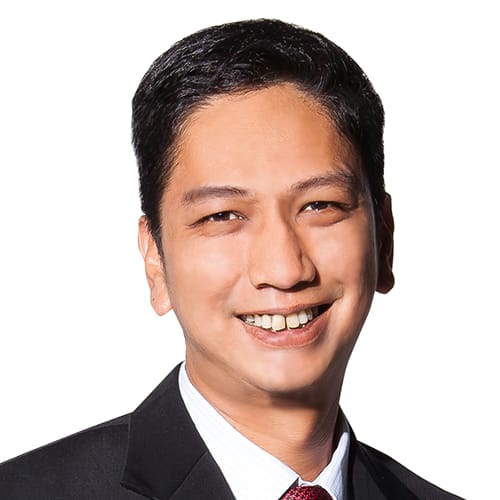Wooden swords and replica rifles: History buffs in Indonesia recreate battles to honour national heroes

Indonesian re-enactors in Dutch East Indies Army uniforms recreating a battle scene. (Photo: Nivell Rayda)
JAKARTA: With a wooden practice sword in hand and dressed in the manner of a World War II Imperial Japanese Army officer, Jasen Purwa Adi walked into a sun-baked yard of an early 20th century home.
On the other side of the yard, a makeshift outpost made out of plywood sheets had been erected, fortified by barbed wire fences and sand bags.
The outpost was guarded by seven men in Dutch East Indies Army uniforms and armed with replica rifles and a reproduction machine gun.
Adi and three of his men may be outnumbered and outgunned, but within minutes, they seized control of the outpost and took their opponents as prisoners.
They were re-enacting the significant moments in the country’s history, from the time the Dutch colonised Indonesia to the 1942 Japanese invasion, the subsequent 1945 proclamation of Indonesia’s independence and the bloody struggles to keep the Allied Forces from reclaiming the country for the Netherlands.
About 40 re-enactors - men and women of different ages and from different walks of life - participated in the re-enactment on Aug 1 at the Declaration of Independence Formulation Museum in Central Jakarta. The museum wanted to produce a video to commemorate Indonesia's Independence Day, which falls on Aug 17.
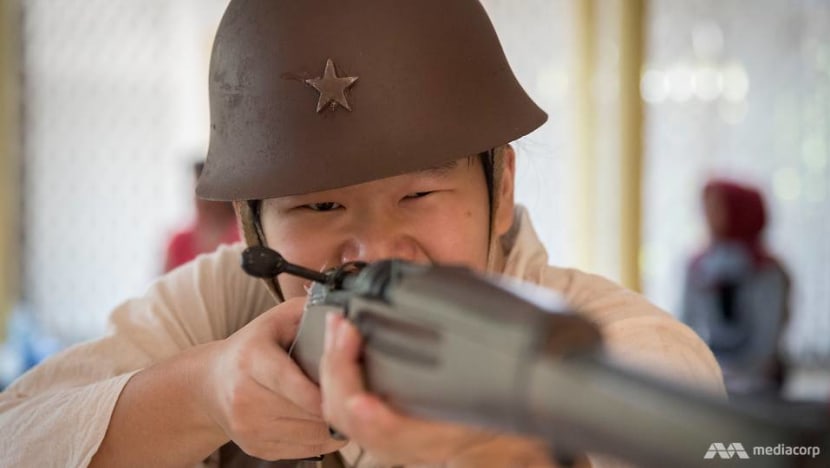
READ: Indonesia to keep Independence Day celebration modest as COVID-19 rages
Some wore period-correct civilian clothes while others dressed in military fatigues of varying eras and countries.
To act out these scenes, some re-enactors had to play multiple roles.
One re-enactor, Okie Rishananto, brought three sets of costumes that day as he had to play a pre-World War II Dutch colonial soldier, a member of the World War II Allied Forces troop and Indonesia’s first vice president Mohammad Hatta.
“We tried to be as accurate as possible,” the 44-year-old graphic designer told CNA, adding that re-enactors like himself would obsess over tiny details of what fighters from different eras wore.
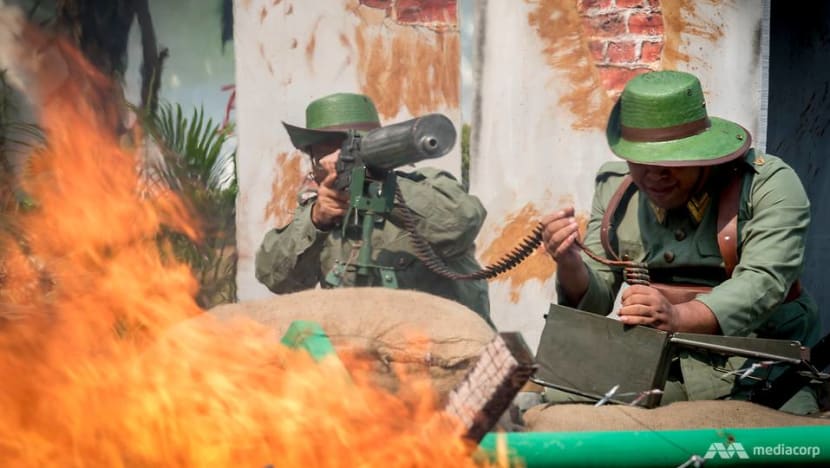
The first re-enactor community in Indonesia was started in 2003 and since then, similar communities across Indonesia have sprung up. It is estimated that there are now at least 2,000 re-enactors in the country.
Rishananto said that the re-enactor community in Jakarta gets together almost every month, particularly around anniversaries of famous battles, events or birthdays of historical figures.
Most of the re-enactments are private events among the re-enactors, held in remote locations or private properties to keep bystanders with modern clothes away from the final photos or videos.
However, the community is often engaged by museums and city governments across Indonesia looking to stage re-enactments for the public to see as part of their celebrations and events.
"The Yogyakarta government recently invited us to stage re-enactment of their famous battle. They provided us with train tickets, meals and a place to stay. Participants have to provide their own costumes, gear and props," he said.
APPRECIATION FOR COUNTRY'S HEROES
Being a re-enactor allows him to better appreciate the struggles of the country's heroes, Rishananto said.
"By re-enacting, you experience first hand the things that they went through. We get to feel their hardship, their tiredness and their pain. These things were not mentioned in history books."
It is this appreciation which drives re-enactors like Rishananto to portray the battles as accurately as possible.
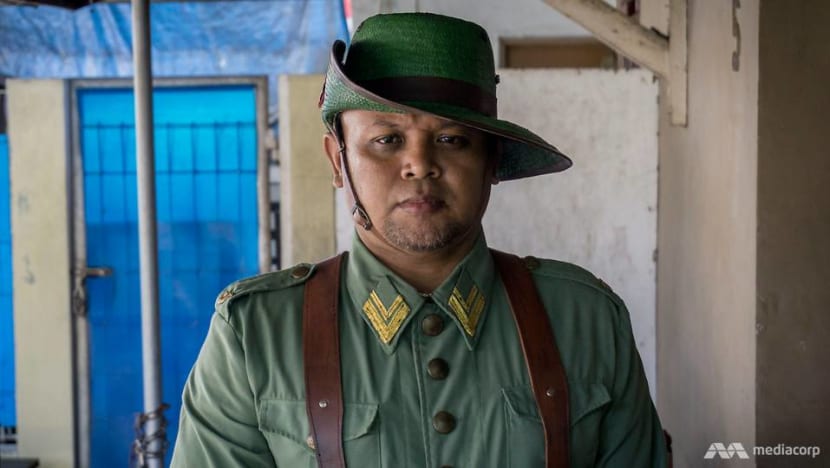
“You have to do your research. If you are recreating a specific battle scene then you have to know exactly who were involved in it. Different branches of the military have different uniforms. Different divisions and units were issued different types of gear. Even if they were from the same country,” he said.
Which is why it can take up to one year to prepare one mock battle scene, another re-enactor Mohammad Iqbal told CNA.
READ: In Jakarta, an archaeologist races against time to preserve the city's 400-year-old fortified walls
“We consult local historians, read history books, dig up old maps, newspapers, photos and so on. We even talked to people who were there at the time, including the Independence fighters who might still be alive,” the 45-year-old said.
“We then establish how many re-enactors we need, what types of gear and uniform should we use and decide who gets to play what.”
But there are re-enactments of better known battles which require less preparation. “Because we commemorate those battles every year, we spend less time on research,” Iqbal said.

Iqbal said being a re-enactor is more than donning period-correct costumes and staging mock battles.
“By becoming a re-enactor I get to talk to veterans who shared many of their personal stories. I get to find out that there was once a battle near where I live and another near my parents’ hometown,” Iqbal said.
“That is what makes me proud of being a re-enactor. It gives more values to the stories you heard or read in the history books. It’s more than dressing up and wearing costumes.”
OBSESSION TO DETAIL
For re-enactors in Indonesia, sourcing uniforms and gear proved to be a challenge, particularly weapons which are illegal to own in the country.
“I have to custom make many of my uniforms, especially those worn by American and British soldiers which are not readily available here. If you are rich then you can order one from their military surplus stores. Not us though,” Iqbal said.
“Besides, I prefer replicas over the real thing. By wearing replica uniforms you don’t care if you have to crawl or roll over in the mud. It allows me to act out my scenes better.”

To recreate one uniform, Rishananto said he had to look at old black and white photos of the real thing.
“For example, the Dutch East Indies Army uniforms have their pockets aligned with the third button. Meanwhile Dutch soldiers during World War II would wear the same uniforms as those worn by other members of the Allied Forces because their country was being occupied by Germany,” he said.
“Getting the colour and materials right is the hardest challenge of all, because you can’t tell by looking at old black and white photos.”
Rishananto said he often goes to museums or talks to collectors to view the real thing.
For the Aug 1 re-enactment at the museum, Rishananto brought two replica rifles, one made to look like those used by the Dutch before the Japanese invasion and the other used during World War II.
“Fighters from the two eras not only wore different uniforms but also carried different types of pouches, belts and water canteens. “Even the bullets they used were different,” he said.
Meanwhile, Adi preferred to order his replica uniform from Japan. “Even though this is a replica, it is made from the same material as the real thing and sewn the exact same way,” he said adding that the rest of his gear is locally made.
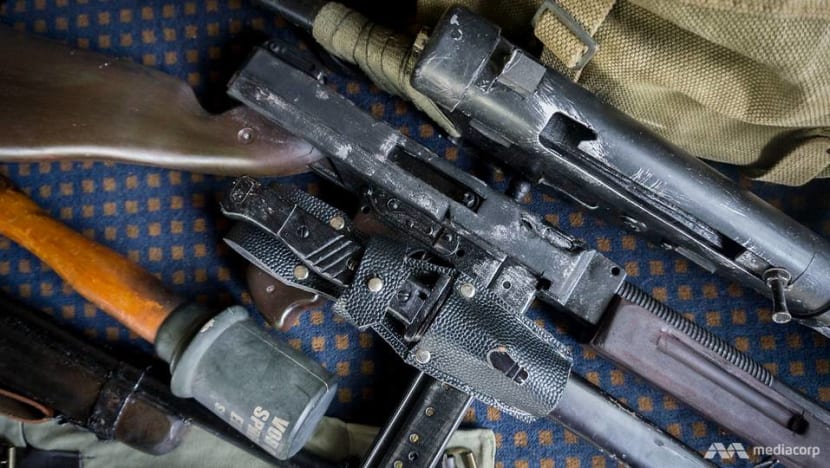
“I would prefer to have everything locally made but for uniforms, none came close to the quality as those made in Japan.”
Adi said his helmet is genuine, salvaged by locals from a dead Japanese soldier in South Sumatra. His helmet, he claimed, is haunted.
HOW IT ALL BEGAN
Re-enactment in Indonesia is fairly new, said Rishananto, who was among the first re-enactors in Indonesia.
Inspired by movies like Saving Private Ryan and the television series Band of Brothers, Rishananto, who has always been a military history buff, began sharing photos of himself posing as World War II soldiers on Friendster in the early 2000s.
“The photos generated many praises but also many critiques as well. Some said: ‘This is inaccurate, this gear is not of the period,’ and so on. I replied: ‘How do you know all this?’ and they said they also have similar costumes and gear,” he said.
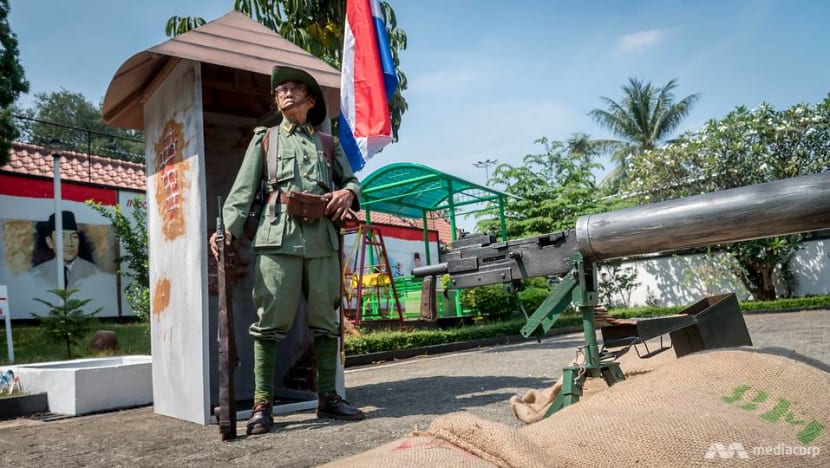
“And so we all got together to share information and showed off our collections. There were only 10 of us back then. Then one of us had this idea: ‘Why don’t we re-enact some battle scenes.’ Re-enactors have been around in other countries since the 1960s but at the time none of us knew what re-enactors were.”
READ: Forgotten heroes - Indonesian independence war veterans fall on hard times
The birth of the re-enactment scene in Indonesia also coincided with the craze on airsoft guns in the early 2000s, re-enactor Sonny Cavalera said.
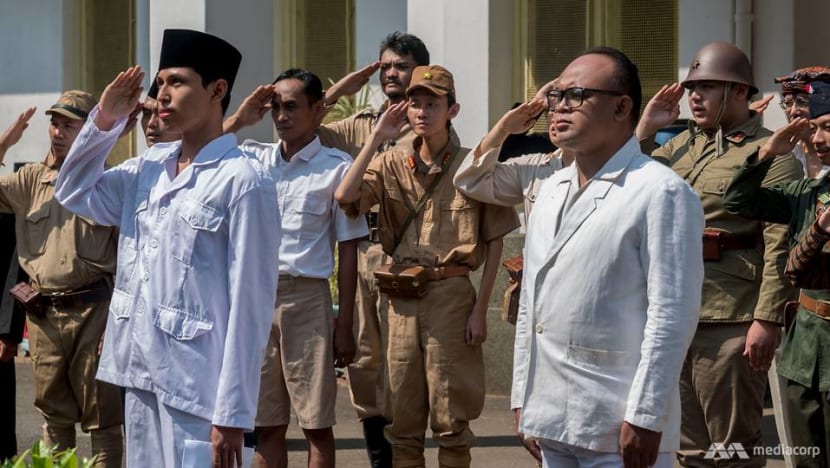
“In the world of airsoft, there is this thing called ‘geardo’ which is to dress in the style of the military units which use the type of weapons we own. That’s how I became introduced to these history enthusiasts and that’s how I joined,” he said.
“I like history, but it is more fun to learn history by recreating it, particularly in places where such historical events occurred.”
YOUNG PEOPLE ALSO DRAWN TO RE-ENACTMENTS
Re-enactment is not only attractive to the middle-aged.
At the Aug 1 event, nearly half of the re-enactors were in their teens and 20s. There were even two boys playing the roles of children from the 1930s and 1940s.
High school student Russell Alexander Yim, 16, said he had only been re-enacting since January after being introduced to the community by a friend.
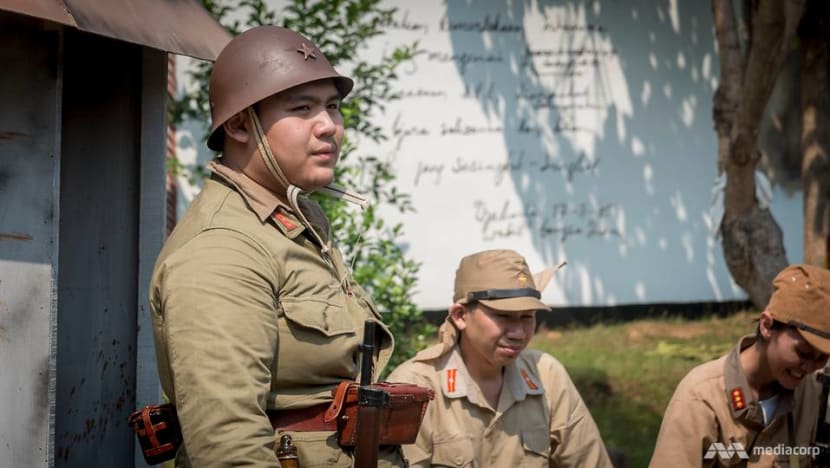
“There’s a sense of community. You get to meet people who are interested in the same things and hang out with them. Being a re-enactor gives me a driving passion to research more. I have a better appreciation for our history now,” he told CNA.
Vanial Kurniawan, 19, said she participated in a three-day re-enactment of a battle in Yogyakarta in February.
Kurniawan had to walk from one village to the next to act out her scenes. During breaks, she and other re-enactors from across Indonesia ate nothing but cassava and corn, just as local fighters would at the time.
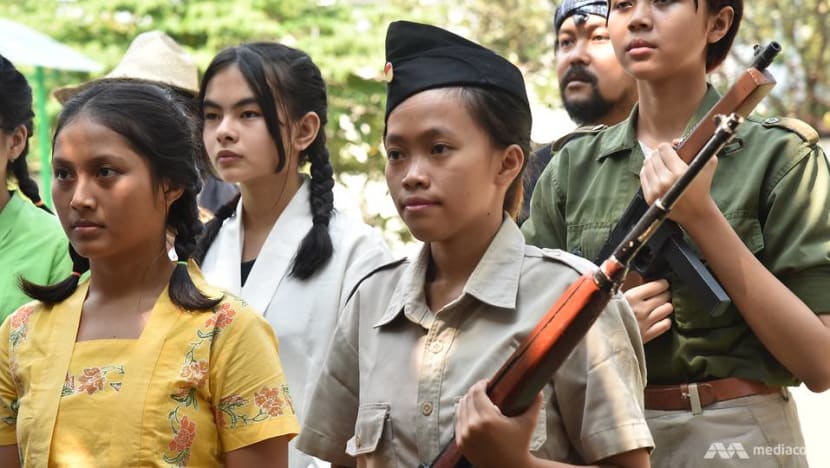
“I became so emotional I burst into tears. I wondered, is this what it was like back then? These fighters were willing to shed their blood, sweat and tears for our country. The experience made me ask myself what young people like me have done for our country,” she told CNA.
College student Adi also took his involvement in re-enactments seriously. He had been consulting World War II-era Japanese military manuals and guideline books so he could learn the proper way of putting on his hat and helmet and tying his leg bindings.
The 21-year-old even learned a few Japanese military phrases and commands so he could act out his scenes properly.
Cavalera, the 43-year-old re-enactor who is an airsoft enthusiast, said he is happy that younger generations are also taking part in historical re-enactments. “I want young people to also learn about our history and our independence, which was fought with blood and tears,” he said.








